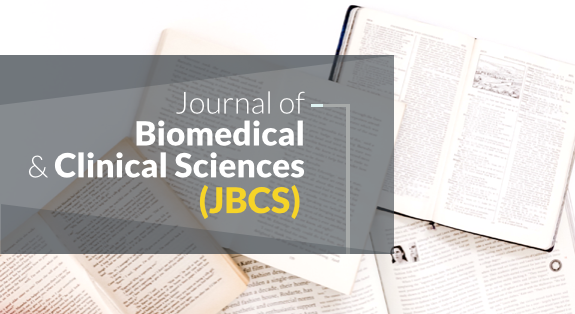Asthma is a common condition among children, in which male children are more commonly affected as compared to female children. This disparity is seen in the gender comparison until the age of 20. In 2006, the prevalence of children with asthma below 18 years old in Malaysia is estimated at 7.1%, while in 2011, children aged 5 to 9 years old and teenagers aged 15 to 19 years old made up 8.5% and 8.1% of the total number of people reporting to have ever been told to have asthma (Ministry of Health Malaysia, 2008 and Ministry of Health Malaysia, 2011). While comparing between races, the prevalence of asthma is the highest in Malays, followed by Indians, Chinese and other Bumiputera ethnicities. Asthma control, on the other hand, was found to be in inverse relationship to the number of cases, while comparing between the three major races in Malaysia (Ahad & Ming Khoo, 2017).
Characterized by variable airflow limitation secondary to airway narrowing, airway wall thickening and increased mucus, an asthmatic episode could cause a child to experience breathing difficulty that is progressively worsening, cough, wheeze and chest tightness, or these symptoms combined (Boonpiyathad, et.al., 2017 and Dunican & Fahy, 2015). Children with asthma may have impaired airway development, leading to reduced maximal lung function which may persist into adulthood (Dharmage, Perret, & Custovic, 2019).
Physical activity in children is often short but frequent, intense, but commonly alternated with light or sedentary activity. Crediting to rapid heart rate recovery, children, in general, would be able to keep up with this pattern, but specifically for children with exercise-induced bronchoconstriction (EIB), which is common in asthma, the recovery could be compromised by the limitation of the pulmonary gas exchange due to the restriction of the airway (van der Kamp et al., 2019). EIB can lead to mild to moderate symptoms of chest tightness, wheezing, coughing, and dyspnea within 15 minutes after 5 to 8 minutes of high-intensity aerobic activity (Gerow & Bruner, 2020).
Van der Kamp et al., (2019) found that children with EIB, especially those that start during exercise, called breakthrough EIB (BT-EIB), tend to engage less in physical activity compared to children without EIB. Children with EIB, especially BT-EIB, take part in less activity, and the activity that they do engage in is shorter and less intense as compared to their peers who do not experience EIB.
Despite being a common trigger of asthma, exercise benefits asthmatic children by reducing airway inflammation and mediating the effect of asthma on obesity and quality of life. Wafa et al. (2016) highlighted that the promotion and monitoring of physical activity in children, especially those diagnosed with asthma, is paramount. The World Health Organization recommended that children should engage in a minimum of 60 minutes of moderate-to-vigorous physical activity daily. A study conducted by Santos et al., in 2019 had shown that the higher the level of physical activity a child with asthma engages in, and the better the asthma control in that child.
For children with asthma, the type of physical activities engaged is important. According to Hughes, (2014), the activities that provoke asthmatic symptoms are, those causing prolonged, rapid breathing, such as distance running and soccer, or figure skating, ice hockey, cross-country skiing, paddling, cycling and dancing for some. Volleyball, downhill skiing, softball, baseball and taekwondo are some examples of physical activity that does not lead to prolonged, rapid breathing, thus is deemed more suitable for these children.
Exercise participation in asthmatic children can be optimized by incorporating warm-ups before planned exercise (Hughes, 2014). This will induce a refractory period, a period of relaxation of the airway after an EIB episode that ranges between 1 to 3 hours. During this time frame, continuing to exercise would not trigger bronchoconstriction (Gerow & Bruner, 2020).
In conclusion, while preventing an asthmatic attack is important, the participation of children with asthma in physical activity should not be discouraged, in fact, it should be promoted. To balance both sides, the optimization of asthma control by medication is crucial, but should not be done excessively, and both parents and children should be adequately educated on EIB, its presentation and its management (Hughes, 2014). Physical activity should continue to be advocated, in normal and asthmatic children alike to promote healthy development of the cardiorespiratory and skeletal system, improve the child’s social and psychological skills, and allow healthy participation of the child in society.
Reference:
Ahad, A., & Ming Khoo, E. (2017). Asthma Control and Care Among Malaysian Primary School Children: A Cross-Sectional Study. Asia Pacific Journal of Public Health, 29(5), 422–429. https://doi.org/10.1177/1010539517717766
Boonpiyathad, T., Sözener, Z. C., Satitsuksanoa, P., & Akdis, C. A. (2019, December). Immunologic mechanisms in asthma. In Seminars in immunology (Vol. 46, p. 101333). Academic Press.
Dharmage, S. C., Perret, J. L., & Custovic, A. (2019). Epidemiology of asthma in children and adults. Frontiers in pediatrics, 7, 246.
Dunican, E. M., & Fahy, J. V. (2015). The Role of Type 2 Inflammation in the Pathogenesis of Asthma Exacerbations. Annals of the American Thoracic Society, 12 Suppl 2(Suppl 2), S144–S149. https://doi.org/10.1513/AnnalsATS.201506-377AW
Gerow, M., & Bruner, P. J. (2020). Exercise Induced Asthma. Treasure Island, FL: StatPearls.
Hughes D. (2014). Childhood asthma and exercise. Paediatrics & child health, 19(9), 467–468. https://doi.org/10.1093/pch/19.9.467
Ministry of Health Malaysia. (2008). The Third National Health and Morbidity Survey 2006 (NHMS III): Asthma. Institute for Public Health, National Institutes of Health, Ministry of Health.
Ministry of Health Malaysia. (2011). National Health and Morbidity Survey 2011 (NMRR-10-757-6837). Institute for Public Health, National Institutes of Health, Ministry of Health.
Santos, A. P., Strassburger, M., Roncada, C., Stein, R. T., Pitrez, P. M., & Strassburger, S. Z. (2019). Effect of physical activity on asthma control in schoolchildren. Einstein (São Paulo), 18. https://doi.org/10.31744/einstein_journal/2020ao4936
van der Kamp, M. R., Thio, B. J., Tabak, M., Hermens, H. J., Driessen, J. M. M., & van der Palen, J. A. M. (2019). Does exercise-induced bronchoconstriction affect physical activity patterns in asthmatic children? Journal of Child Health Care, 24(4), 577–588. https://doi.org/10.1177/1367493519881257
Wafa, S. W., Shahril, M. R., Ahmad, A. bte, Zainuddin, L. R., Ismail, K. F., Aung, M. M., & Mohd Yusoff, N. A. (2016). Association between physical activity and health-related quality of life in children: a cross-sectional study. Health and Quality of Life Outcomes, 14(1). https://doi.org/10.1186/s12955-016-0474-y
Scroll to Top












